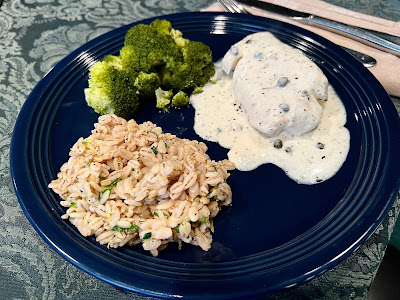This article was originally published on Clover Health.
Cooking oil choices seem endless. Olive, canola, peanut, and
more—learn which oils are the best for your health.
By Clover Health
A walk through the cooking oil section of grocery stores
today can feel a little overwhelming. With dozens of choices, it can be
difficult to determine which oils will have the best health benefits or fit
your food prep needs. This overview can help you decide what to stock in your
kitchen cabinet.
Types of Cooking Oils and When to Use Them
Nutrition experts agree that everyone should avoid vegetable
shortening and hard-stick margarine and only consume butter and lard in
moderation if your doctor gives the OK. You can replace solid fats with a
cooking oil that is suited to your style of cooking, tastes, and health
goals.
There are several factors to consider when choosing the best
cooking oil, including how hot or how long you will be cooking the food and the
smoke point of the oil. When heated to a high temperature, some oils can start
to break down and create unhealthy compounds that can be harmful to your
health. If oil begins to smoke in a pan, it’s a sign it is too hot and is
starting to break down.
Find out which oils stand up to heat and learn about
different types of cooking oil fat content, taste, and more in the list
below.
Olive oil
Extra-virgin olive oil has heart-healthy monounsaturated
fats and anti-inflammatory properties that can lower LDL cholesterol. Because
it’s not refined (exposed to high heat), extra-virgin olive oil is often
considered the healthier type of olive oil. Regular or light olive oil has a
higher smoke point and can be used for searing and pan-frying, but it has fewer
antioxidants and is more processed than extra-virgin olive oil. Extra-virgin
olive oil has a lower smoke point, so is better suited for making salad
dressing, drizzling on pasta, or using with foods that are cooked at a low
heat.
Canola oil
Canola oil is low in saturated fats and can be heated to a
range of 400 to 450 degrees. It also has a more subtle flavor than some of the
other cooking oils. Canola oil contains plenty of healthy omega-3 fats. One
downside to the oil is that it can start to taste or smell slightly fishy as it
ages. Generally, canola oil lasts six months to a year after opening and about
two years unopened.
Peanut oil
Peanut oil is great for frying and stir-frying because it
can withstand high heat before it starts to break down. It generally has a
neutral or slightly nutty flavor. Peanut oil is also a good source of vitamin E
and antioxidants as well as heart-healthy monounsaturated fats, but is best
used in moderation.
Avocado oil
Like olive oil, avocado oil is high in monounsaturated fats,
which are considered heart healthy. Avocado oil is ideal for baking because it
has very little flavor. Refined avocado oil has a smoke point of 520 degrees
(great for roasting veggies in the oven) and unrefined has a smoke point of 375
degrees. One other thing to consider: Avocado oil can be one of the more
expensive oils.
Sunflower and safflower oil
Sunflower and safflower oil come in two versions: regular
(traditional) or high oleic. The high-oleic versions are healthier because they
include monounsaturated fats in addition to polyunsaturated fats. If you have
regular sunflower or safflower oil, it’s best to only use it once in a while
since it is high in omega-6 fatty acids, which may lead to inflammation,
according to some studies.
Corn, soybean, and other vegetable oils
Vegetable oil is typically made up of corn or soybean oil,
or a blend that may include canola, corn, soybean, cottonseed, or sunflower
oil. While these oils are healthier than solid fats, they do not have the
health benefits of monounsaturated fats that are found in olive, avocado,
peanut, and canola oil. Because vegetable oils have a high smoke point, they
work well for stir frying, roasting, or baking.
Coconut oil
Coconut oil should be used in moderation because it has more
saturated fats than many of the other plant oils above. While many people have
praised the health benefits of medium chain triglycerides found in coconut oil,
these fats are actually a low percentage of the oil. Coconut oil does
have other
beneficial uses and can make for a great moisturizer for skin and
hair.
How to Use Cooking Oils
Once you’ve found your favorite oils, there are several
different ways to use them.
- Make your own salad dressings with extra-virgin olive
oil.
- Coat pans to prevent sticking. Be sure to select an oil that
has a smoke point and matches your cooking method and heat level. Canola oil
and avocado oil are good choices.
- Substitute oil for butter in recipes. Canola oil and avocado
oil are ideal for baking due to their subtle flavors and ability to withstand
higher temperatures. Coconut oil can also be used for baking.
- Stir fry or saute with oils that withstand higher heat, such
as peanut, canola, sunflower, or avocado oils.
- Drizzle extra-virgin olive oil over pasta or cooked
vegetables.
- Use extra-virgin olive oil as a dip for breads, replacing
butter or margarine.
Want to see more articles like this? If you aren’t already
subscribed to Clover Living magazine, subscribe for free here.
This article was medically reviewed by Dr. Kumar
Dharmarajan.
--------------------------------------------------------
Have a great week, everyone, and thank you for your support!
Blessed be… and happy cooking!
Chef Michael R









.JPG)








































